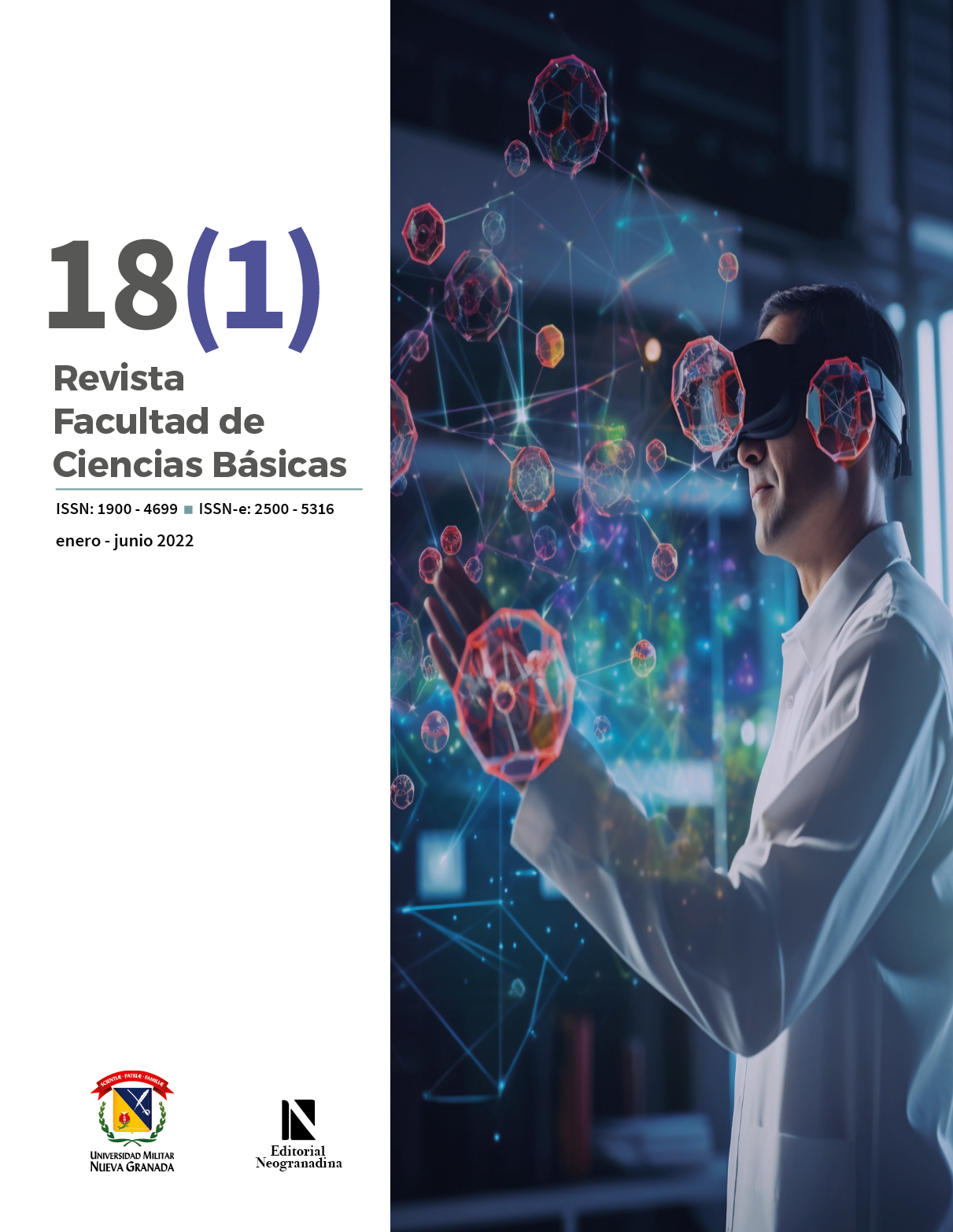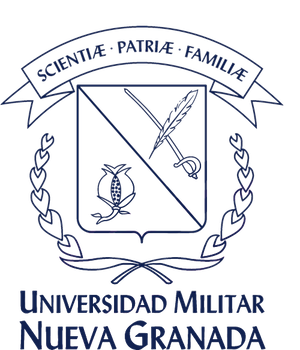Modelo matemático para el control de la transmisión paralela del covid-19 por individuos sintomáticos y asintomáticos
Resumo
Foi desenvolvido um modelo matemático baseado em equações diferenciais ordinárias que descreve a dinâmica do COVID-19 em uma comunidade humana onde os indivíduos infectados podem ou não ser sintomáticos e na qual são implementadas políticas de saúde pública. Com interesse em intervenções, seja por prevenção (como uso de máscaras, higiene das mãos, distanciamento social) ou por tratamento (farmacêutico), investiga-se se o problema de saúde controlável, portanto, a estabilidade e controlabilidade das soluções do modelo com base no número básico de reprodução; em seguida, estabelece-se um critério de cobertura de prevenção com base no número de reprodução do controle, proporcionando diferentes cenários de simulação para essa medida de controle. Os resultados revelaram que a prevenção é eficaz na redução da transmissão, porém, sua eficácia pode ser reduzida por não se saber com certeza a magnitude da transmissão de indivíduos com a infecção mas sem sintomas e o grau de participação daqueles que apresentam tal condição. que possibilitou o reaparecimento de surtos sustentados de COVID-19.
Downloads
Referências
T. Phan, “Novel coronavirus: From discovery to clinical diagnostics,” Infection, Genetics and Evolution, vol. 79, no 2020, 2020, doi: 10.1016/j.meegid.2020.104211
J. A. Rodriguez-Morales, D. K. Bonilla-Aldana, G. J. Balbin-Ramon, A. A. Rabaan, R. Sah, A. Paniz-Mondolfi, ... & S. Esposito, “History is repeating itself: Probable zoonotic spillover as the cause of the 2019 novel Coronavirus Epidemic,” Infez Med., vol. 28, no. 1, pp. 3-5, 2020.
V. M. Corman, D. Muth, D. Niemeyer, & C. Drosten, “Hosts and sources of endemic human coronaviruses,” Advances in virus research, vol. 100, pp. 163-188, 2018, doi:10.1016/bs.aivir.2018.01.001
E. E. Walsh, J. H. Shin, & A. R. Falsey, “Clinical impact of human coronaviruses 229E and OC43 infection in diverse adult populations,” The Journal of infectious diseases, vol. 208, no. 10, pp. 1634-1642, 2013, doi:10.1093/infdis/jit393
L. Van Der Hoek, K. Pyrc, M. F. Jebbink, W. Vermeulen-Oost, R. J. Berkhout, K. C. Wolthers, ... & B. Berkhout, “Identification of a new human coronavirus,” Nature medicine, vol. 10, no. 4, pp. 368-373, 2004, doi: 10.1038/nm1024
P. C. Woo, S. K. Lau, C. M. Chu, K. H. Chan H. W. Tsoi, Y. Huang, ... & K. Y. Yuen, “Characterization and complete genome sequence of a novel coronavirus, coronavirus HKU1, from patients with pneumonia,” Journal of virology, vol. 79, no. 2, pp. 884-895, 2005, doi: 10.1128/JVI.79.2.884-895.2005
L. Enjuanes, S. Zuñiga, C. Castaño-Rodriguez, J. Gutierrez-Alvarez, J. Canton, & I. Sola, “Molecular basis of coronavirus virulence and vaccine development,” Advances in virus research, vol. 96, pp. 245-286, 2016, doi: 10.1016/bs.aivir.2016.08.003
P. Zhou, X. L. Yang, X. G. Wang, B. Hu, L. Zhang, W. Zhang, ... & Z. L. Shi, “Discovery of a novel coronavirus associated with the recent pneumonia outbreak in humans and its potential bat origin,” bioRxiv. Cold Spring Harb Lab, pp. 22-914952, 2020, doi: 10.1101/2020.01.22.914952
B. Meyer, M. A. Müller, V. M. Corman, C. B. E. M. Reusken, D. Ritz & G. Godeke, “Antibodies against MERS Coronavirus in Dromedaries. United Arab Emirates,” Emerg Infect Dis., vol. 20, no. 4, pp. 552-559, 2014.
E. S. A. Barrera, R. G. Pliego, J. E. Raya, J. C. Basurto, & J. G. Machorro, “Coronavirus de tipo 2 causante del síndrome respiratorio agudo severo, un virus que llegó para quedarse,” Revista Mexicana de Mastología, vol. 11, no. 1, pp. 9-17, 2021.
C. Wang, P. W. Horby, F. G. Hayden & G. F. Gao, “A novel coronavirus outbreak of global health concern,” The lancet, vol. 395, no. 10223, pp. 470-473, 2020, doi: 10.1016/S0140-6736(20)30185-9
N. Chen, M. Zhou, X. Dong, J. Qu, F. Gong, Y. Han, ... & L. Zhang, “Características epidemiológicas y clínicas de 99 casos de neumonía por el nuevo coronavirus de 2019 en Wuhan, China: un estudio descriptivo,” Lancet, vol. 395, no. 10223, pp. 507-513, 2020.
S. Jiang, S. Xia, T. Ying & L. Lu, “A novel coronavirus (2019-nCoV) causing pneumonia-associated respiratory syndrome,” Cellular & molecular immunology, vol. 17, no. 5, pp. 554-554, 2020, doi: 10.1038/s41423-020-0372-4
M. L. Holshue, C. DeBolt, S. Lindquist, K. H. Lofy, J. Wiesman, H. Bruce, ... & S. K. Pillai, “First case of 2019 novel coronavirus in the United States,” New England journal of medicine, vol. 382, no. 10, pp. 929-936, 2020, doi: 10.1056/NEJMoa2001191
F. Di Gennaro, D. Pizzol, C. Marotta, M. Antunes, V. Racalbuto, N. Veronese, & L. Smit, “Coronavirus diseases (COVID-19) current status and future perspectives: a narrative review,” International journal of environmental research and public health, vol. 17, no. 8, pp. 2690, 2020, doi: 10.3390/ijerph17082690
F. J. Díaz-Castrillón & A. I. Toro-Montoya, “SARS-CoV-2/COVID-19: The virus, the disease and the pandemic,” Medicina & laboratorio, vol. 24, no. 3, pp. 183-205, 2021.
S. Lee, T. Kim, E. Lee, C. Lee, H. Kim, H. Rhee, ... & T. H. Kim, “Clinical course and molecular viral shedding among asymptomatic and symptomatic patients with SARS-CoV-2 infection in a community treatment center in the Republic of Korea,” JAMA internal medicine,” vol. 180, no. 11, pp. 1447-1452, 2020, doi:10.1001/jamainternmed.2020.3862
L. Chaw, W. C. Koh, S. A. Jamaludin, L. Naing, M. F. Alikhan, & J. Wong, “Analysis of SARS-CoV-2 transmission in different settings, Brunei,” Emerging infectious diseases, vol. 26, no. 11, pp. 2598-2606, 2020, doi:10.3201/eid2611.202263
D. McEvoy, C. McAloon, A. Collins, K. Hunt, F. Butler, A. Byrne, ... & S. J. More, “Relative infectiousness of asymptomatic SARS-CoV-2 infected persons compared with symptomatic individuals: a rapid scoping review,” BMJ open, vol. 11, no. 5, pp. e042354, 2021, doi:10.1101/2020.07.30.20165084
M. Egger, L. Johnson, C. Althaus, A. Schöni, G. Salanti, N. Low & Norris S. L, “Developing WHO guidelines: time to formally include evidence from mathematical modelling studies,” F1000Research, vol. 6, no. 0, pp. 1584, 2017, doi: 10.12688/f1000research.12367.2
A. J. Kucharski, T. W. Russell, C. Diamond, Y. Liu, J. Edmunds, S. Funk, ... & S. Flasche, “Early dynamics of transmission and control of COVID-19: a mathematical modelling study,” The lancet infectious diseases, vol. 20, no. 5, pp. 553-558, 2020, doi: 10.1016/S1473-3099(20)30144-4
B. Tang, X. Wang, Q. Li, N. L. Bragazzi, S. Tang, Y. Xiao & J. Wu, “Estimation of the transmission risk of the 2019-nCoV and its implication for public health interventions,” Journal of clinical medicine, vol. 9, no. 2, pp. 462, 2020, doi: 10.3390/jcm9020462
E. Díaz, R. A. Menéndez, P. V. Cortés, M. G. Escapa, B. Suberviola, A. S. Lázaro, ... & M. C. González, “Tratamiento farmacológico de la COVID-19: revisión narrativa de los Grupos de Trabajo de Enfermedades Infecciosas y Sepsis (GTEIS) y del Grupo de Trabajo de Transfusiones Hemoderivados (GTTH),” Medicina intensiva, vol. 45, no. 2, pp. 104-121, 2021 doi: 10.1016/j.medin.2020.06.017
World Health Organization, WHO living guideline: drugs to prevent COVID-19: interim guidance, 2 March 2021 (No. WHO/2019-nCoV/prophylaxes/2021.1). World Health Organization, 2021, Recuperado de https://www.who.int/publications/i/item/WHO-2019-nCoV-prophylaxes-2021-1
M. W. Hirsch, S. Smale, and R. L. Devaney, Differential Equations, Dynamical Systems, and an Introduction to Chaos. New York: Academic Press, 2012.
T. Myint-U, Ordinary differential equations. New York: North Holland, 1978.
B. Aguirre Hernández, C. A. Loredo-Villalobos, E. C. Díaz-González & E. Campos-Cantón, “Estabilidad de sistemas por medio de polinomios Hurwitz”, Revista de Matemática: Teoría y Aplicaciones, vol. 24, no. 1, pp. 61-77, 2017, doi: 10.15517/rmta.v24i1.27751
N. Rouche, P. Habets & M. Laloy, Stability theory by Liapunov's direct method, vol. 4. New York: Springer-Verlag, 1977.
H. K. Khalil & J. W. Grizzle, Nonlinear systems, vol. 3. Upper Saddle River, NJ: Prentice hall, 2002.
H. Leiva, “Rothe’s fixed point theorem and controllability of semilinear nonautonomous systems”, Systems & Control Letters, vol. 67, no. 2014, pp. 14-18. doi: http://dx.doi.org/10.1016/j.sysconle.2014.01.008
A. Chang, “An algebraic characterization of controllability,” IEEE Transactions on Automatic Control, vol. 10, no 1, pp. 112-113, 1965, doi: 10.1109/TAC.1965.1098056
H. Leiva, “Rothe’s fixed point theorem and controllability of semilinear nonautonomous systems,” Systems & Control Letters, vol. 67, no. 2014, pp. 14-18, 2014, doi: http://dx.doi.org/10.1016/j.sysconle.2014.01.008
W. O. Kermack & A. G. McKendrick, “A contribution to the mathematical theory of epidemics,” Proceedings of the royal society of london. Series A, Containing papers of a mathematical and physical character, vol. 115, no. 772, pp. 700-721, 1927, doi: 10.1098/rspa.1927.0118
C. N. Ngonghala, E. Iboi, S. Eikenberry, M. Scotch, C. R. MacIntyre, M. H. Bonds & A. B. Gumel, “Mathematical assessment of the impact of non-pharmaceutical interventions on curtailing the 2019 novel Coronavirus,” Mathematical biosciences, vol. 325, no. 2020, pp. 108364, 2020, doi: 10.1016/j.mbs.2020.108364
Copyright (c) 2023 Revista Facultad de Ciencias Básicas

Este trabalho está licenciado sob uma licença Creative Commons Attribution-NonCommercial-NoDerivatives 4.0 International License.











